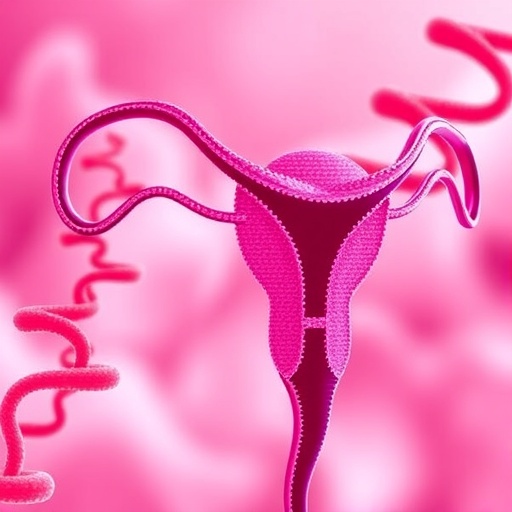Harvard physicists have created a new form of matter – dubbed a time crystal – which could offer important insights into the mysterious behavior of quantum systems.
Traditionally speaking, crystals – like salt, sugar or even diamonds – are simply periodic arrangements of atoms in a three-dimensional lattice.
Time crystals, on the other hand, take that notion of periodically-arranged atoms and add a fourth dimension, suggesting that – under certain conditions – the atoms that some materials can exhibit periodic structure across time.
Led by Professors of Physics Mikhail Lukin and Eugene Demler, a team consisting of post-doctoral fellows Renate Landig and Georg Kucsko, Junior Fellow Vedika Khemani, and Physics Department graduate students Soonwon Choi, Joonhee Choi and Hengyun Zhou built a quantum system using a small piece of diamond embedded with millions of atomic-scale impurities known as nitrogen-vacancy (NV) centers. They then used microwave pulses to "kick" the system out of equilibrium, causing the NV center's spins to flip at precisely-timed intervals – one of the key markers of a time crystal. The work is described in a paper published in Nature in March.
Other co-authors of the study are Junichi Isoya, Shinobu Onoda,and Hitoshi Sumiya from University of Tsukuba, Takasaki Advanced Research Institute and Sumitomo, Fedor Jelezko from University of Ulm, Curt von Keyserlingk from Princeton University and Norman Y. Yao from UC Berkeley.
But the creation of a time crystal isn't significant merely because it proves the previously-only-theoretical materials can exist, Lukin said, but because they offer physicists a tantalizing window into the behavior of such out-of-equilibrium systems.
"There is now broad, ongoing work to understand the physics of non-equilibrium quantum systems," Lukin said. "This is an area that is of interest for many quantum technologies, because a quantum computer is basically a quantum system that's far away from equilibrium. It's very much at the frontier of research…and we are really just scratching the surface."
But while understanding such non-equlibrium systems could help lead researchers down the path to quantum computing, the technology behind time crystals may also have more near-term applications as well.
"One specific area where we think this might be useful, and this was one of our original motivations for this work, is in precision measurement," Lukin said. "It turns out, if you are trying to build…for example, a magnetic field sensor, you can use NV-center spins," he said. "So it's possible these non-equilibrium states of matter which we create may turn out to be useful."
The notion that such systems could be built at all, however, initially seemed unlikely. In fact several researchers (names are Patrick Bruno, Haruki Watanabe, Masaki Oshikawa) went so far as to prove that it would be impossible to create a time crystal in a quantum system that was at equilibrium.
"Most things around us are in equilibrium," Lukin explained. "That means if you have a hot body and a cold body, if you bring them together, their temperature will equalize. But not all systems are like that."
One of the most common examples of a material that is out of equilibrium, he said, is something many people wear on a daily basis – diamond.
A crystallized form of carbon that forms under intense heat and pressure, diamond is unusual because it is meta-stable, meaning that once it adopts that crystal formation, it will stay that way, even after the heat and pressure are removed.
It is only very recently, Lukin said, that researchers began to realize that non-equilibrium systems – particularly those known as "driven" systems, which researchers can "kick" with periodic energy pulses, can exhibit the characteristics of a time crystal.
One of those characteristics, he said, is that the crystal's response across time will remain robust with respect to perturbations.
"A solid crystal is rigid…so if you push on it, maybe the distance between atoms changes a little, but the crystal itself survives," he said. "The idea of a time crystal is to have that type of order in a time domain, but it must be robust."
One other important ingredient is typically if you keep pushing a system away from equilibrium it starts heating up, but it turns out there is a class of systems which are resistant to this heating," Lukin added. "It turns out the time crystal effect is strongly related to this idea that a system is excited, but it not absorbing energy."
To build such a system, Lukin and colleagues began with a small piece of diamond which was embedded with so many NV centers it appeared black.
"We subject that diamond to microwave pulses, which change the orientation of the spins of the NV centers," Lukin explained. "That basically takes all the spins that are pointed up and turns them down, and a next pulse turns them back up."
To test the robustness of the system, Lukin and colleagues varied the timing of the pulses to see whether the material would continue to respond like a time crystal.
"If you don't orient all the spins fully up or down each time, then very rapidly, you will end up with a completely random system ," Lukin said. "But the interactions between the NV centers stabilize the response: they force the system to respond in a periodic, time crystalline manner."
Such systems could ultimately be critical in the development of useful quantum computers and quantum sensors, Lukin said, because they demonstrate that two critical components – long quantum memory times and a very high density of quantum bits – arent' mutually exclusive.
"For many applications you want both of those," Lukin said. "But these two requirements are usually contradictory….this is a well-known problem. The present work shows that we can achieve the desired combination. There is still a lot of work to be done, but we believe these effects might enable us to create a new generation of quantum sensors, and could possibly in the long run have other applications to things like atomic clocks."
###
Media Contact
Peter Reuell
[email protected]
617-496-8070
@HarvardResearch
http://www.harvard.edu
############
Story Source: Materials provided by Scienmag




